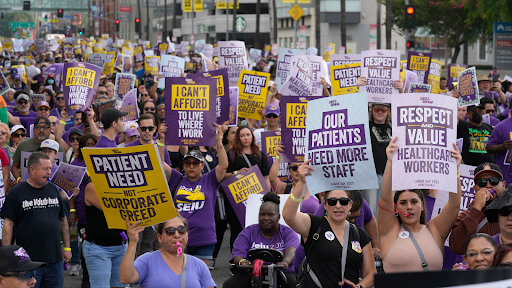Starting October 4, 2023, more than 75,000 workers from Kaiser Permanente initiated the largest health care workers strike in the history of the U.S. The reason for this is because the workers claim to be understaffed, have low pay, and are burned out from all their work.

(New York Times)
During the Covid-19 pandemic, more than 5 million medical workers in the U.S., had left their jobs, which then caused a staffing crunch and left employees that remained feeling overworked and underpaid. More than 75,000 workers from multiple states such as California, Colorado, Oregon, and Washington had staged a three-day strike. Around 180 workers from more facilities across the country had also been on strike but for only a day. A deal between the workers and Kaiser Permanente was reached within the span of a week. The strike was very short but it led to an abundance of patient cancellations for appointments, and forced Kaiser to hire thousands of temporary workers for the time. Around 90% of Kaiser’s workforce is within California, and that’s where the strike had the biggest impact. 85,000 of the members in the Coalition of Kaiser Permanente unions (98.5%), voted to ratify a contract. The contract will run from October 1, 2023, through September 30, 2027.
Before the increase in minimum wage deal was officially announced, Kaiser’s senior vice president of national labor relations, Steve Shields, had said that Kaiser executives decided to raise California wages to $25, and that it was “the right thing to do”. The Union leaders believe that the increase in salaries and future commitments will create long-term stability, that’s been struggling in recent years, especially when Covid-19 hit. Workers will also have a 21% wage increase after 4 years. Currently, Kaiser Permanente is one of the largest U.S. medical employers, and serves about 13 million people in eight states and the District of Columbia. With the new contract holding the industry intact, hopefully a situation like this won’t reoccur.

























